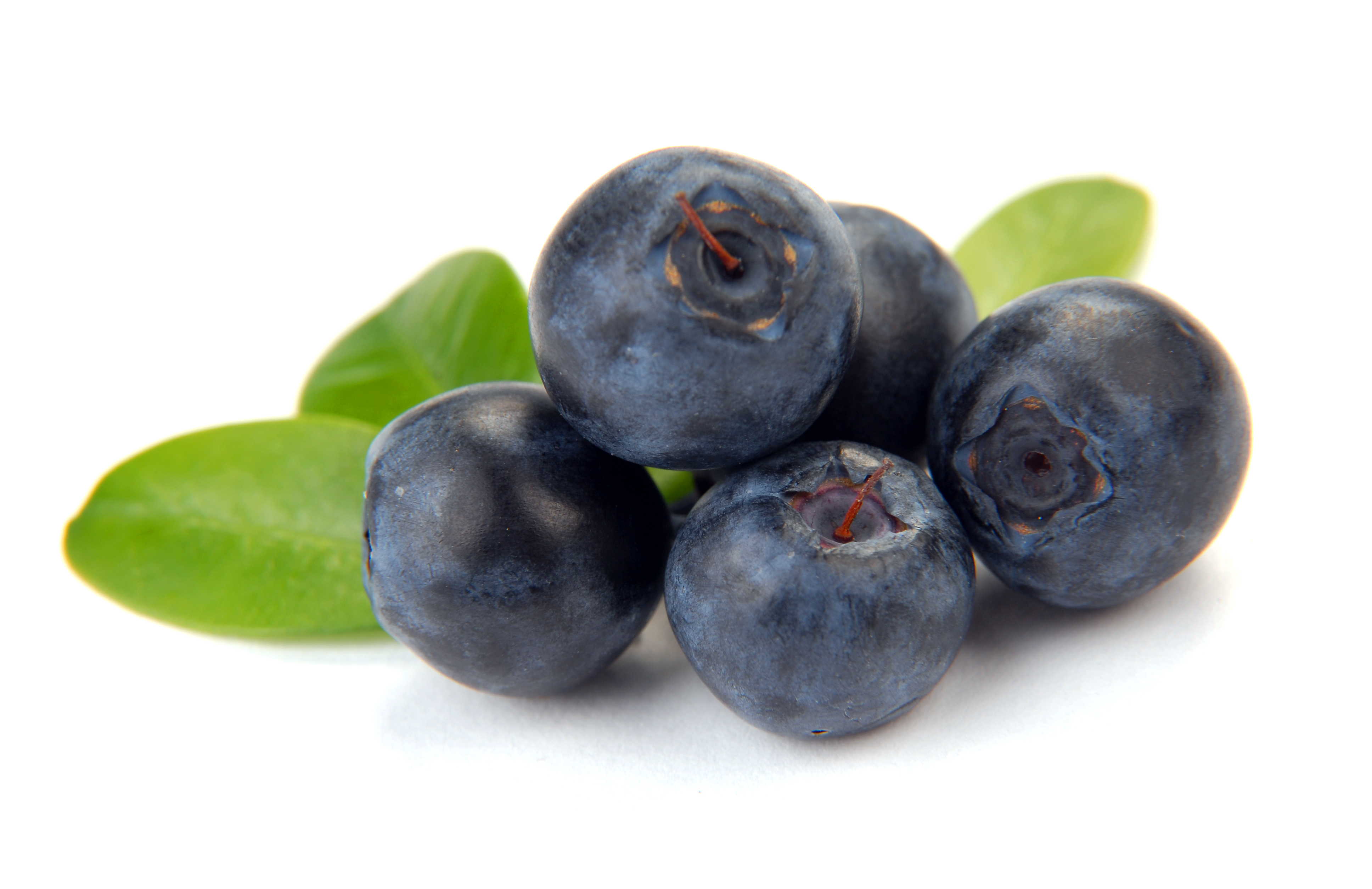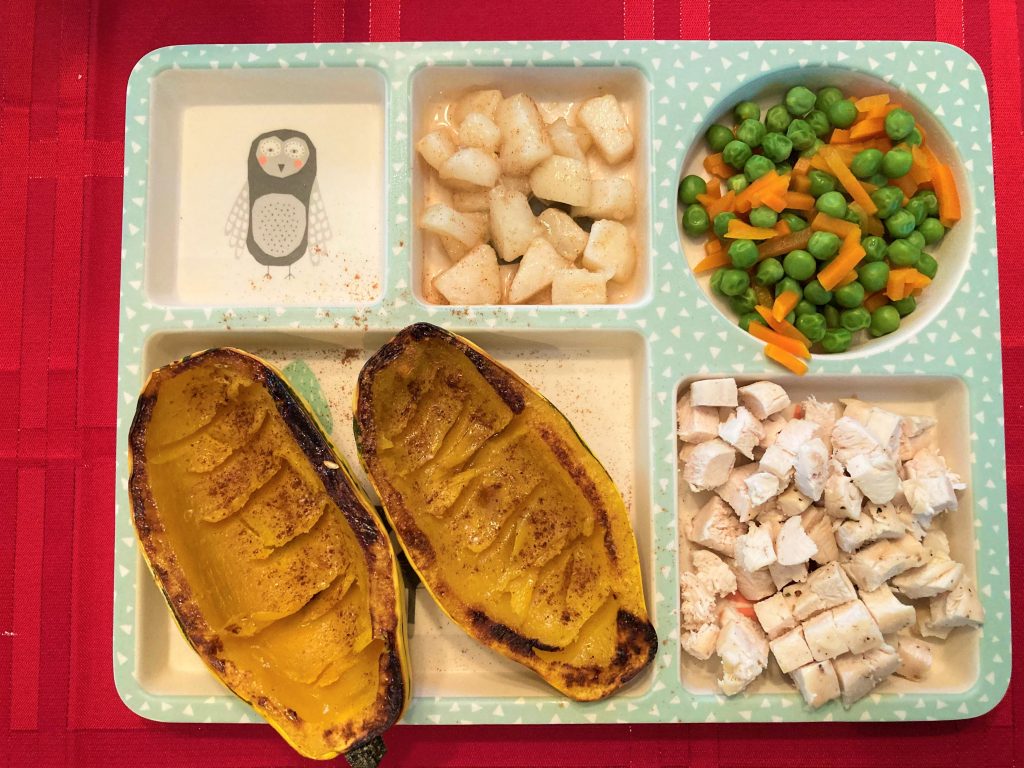
When I started writing this post, I titled it How to Get Toddlers to Eat Veggies. But that just didn’t fit with my food & nutrition philosophy. I start each cooking class by explaining that my goal is to “make healthy food taste great!” Toddlers should not just eat their veggies, they should ENJOY their food just as much as adults enjoy 5-star cuisine!
The last several weeks have been one of the most intense culinary learning experiences for me as I navigated the palate of a ravenous 13 month old. His appetite increased dramatically as soon as he turned one year old, leading us to say on a daily basis, “he can’t possibly still be hungry, can he?” and “how does he fit all of that food in that little tummy?!” To top that off, my cooking time decreased significantly since he is sooo active (and needing Mama’s time and attention) and I am also busier than ever with health coaching!
To top that off, Thomas has Type O blood, which means he thrives on meat, poultry, eggs, fish, veggies, and fruit, with moderate amounts of grains and legumes and minimal dairy. This is the opposite of me (Type A blood), which thrives on a vegetarian diet of grains, legumes, vegetables, fruits, with moderate amounts of poultry, eggs, and dairy, and minimal amounts of meat.
Despite all of these challenges, I am very happy to report that I have expanded my culinary expertise to include the new title of “toddler personal chef & nutritionist!”
Nutrition during this critical stage is arguably one of the most important times of the lifespan, so I feel compelled to share my successes with anyone who has young kids. Please share this post with any busy parents you know who want to provide the most nutrient-dense meals for their growing tornados! 😉

Tip #1:
Kids will eat anything that is baked into a muffin. Thomas ate an ENTIRE batch of veggie muffins in THREE days. Veggie muffins are a lifesaver (or meal saver) when you only have to pop a few on the plate with a protein and it turns into the favorite meal of the day! I now make 2 batches of muffins on Sunday to last the week. They freeze well and can thaw on the counter or in the refrigerator overnight. Thomas definitely prefers them cool out of the refrigerator but they heat up well in the toaster oven too!
Veggie Muffins: 1/2 baked butternut squash, 1 cup cooked broccoli, 1/2 cup sautéed kale, 1 egg, 1/4 cup almond flour, 1/4 cup brown rice flour, pinch of ginger, pumpkin spice, and turmeric. Bake at 350 for 20-25 minutes, until golden and toothpick comes out clean.
Green Spinach Muffins: 2 bananas, 1/4 cup applesauce, 4 oz fresh spinach, 2 eggs, 1/4 cup almond flour, 1/4 cup brown rice flour, pumpkin spice. Bake at 350 for 18-20 minutes, until toothpick comes out clean.
Beet Muffins: 1 cup beet puree (1 large beet, steamed), 1 banana, 1 egg, 1.5 tbsp almond butter, 5 tbsp brown rice flour, 3 tbsp almond flour, 1/8 tsp salt, 1/2 tsp baking powder, pumpkin spice. Bake at 350 for 25-30 minutes, until toothpick comes out clean.
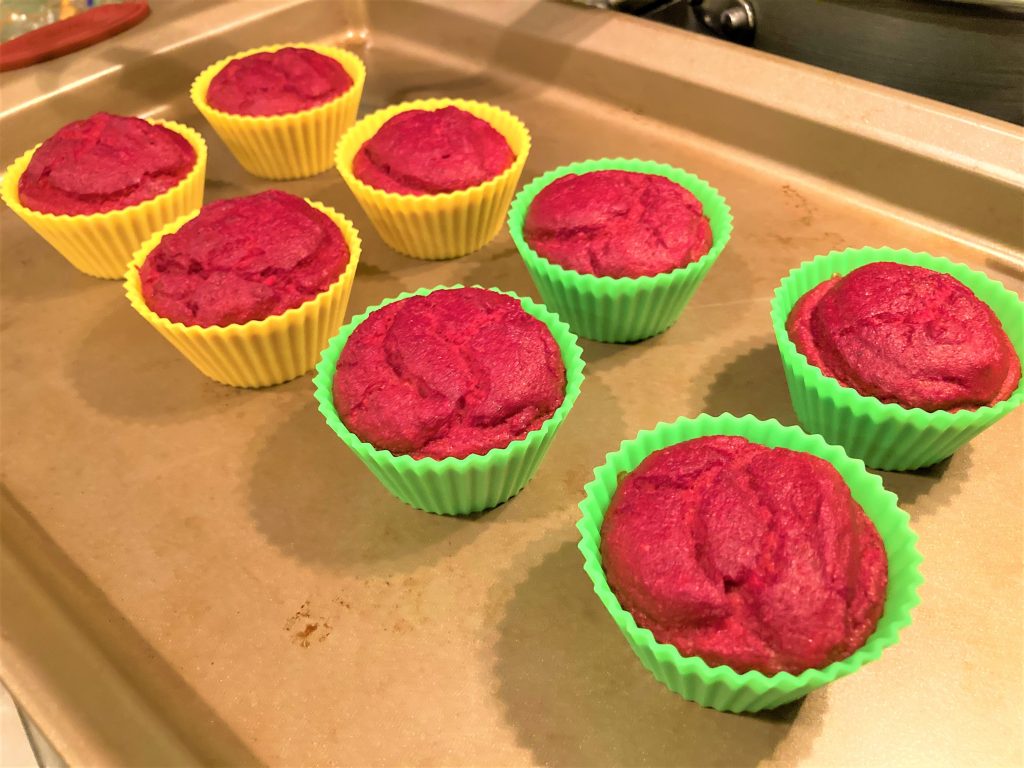
Cauliflower Muffins: 1/2 cup pureed cauliflower, 1/2 cup baked sweet potato, 1/2 cup applesauce, 1 tbsp almond butter, 1 egg, cinnamon, 2 tsp ground flaxseed, 1/4 cup brown rice flour, 2 tbsp almond flour, 1/2 tsp baking powder. Bake at 350 for 25 minutes, until slightly golden and toothpick comes out clean.
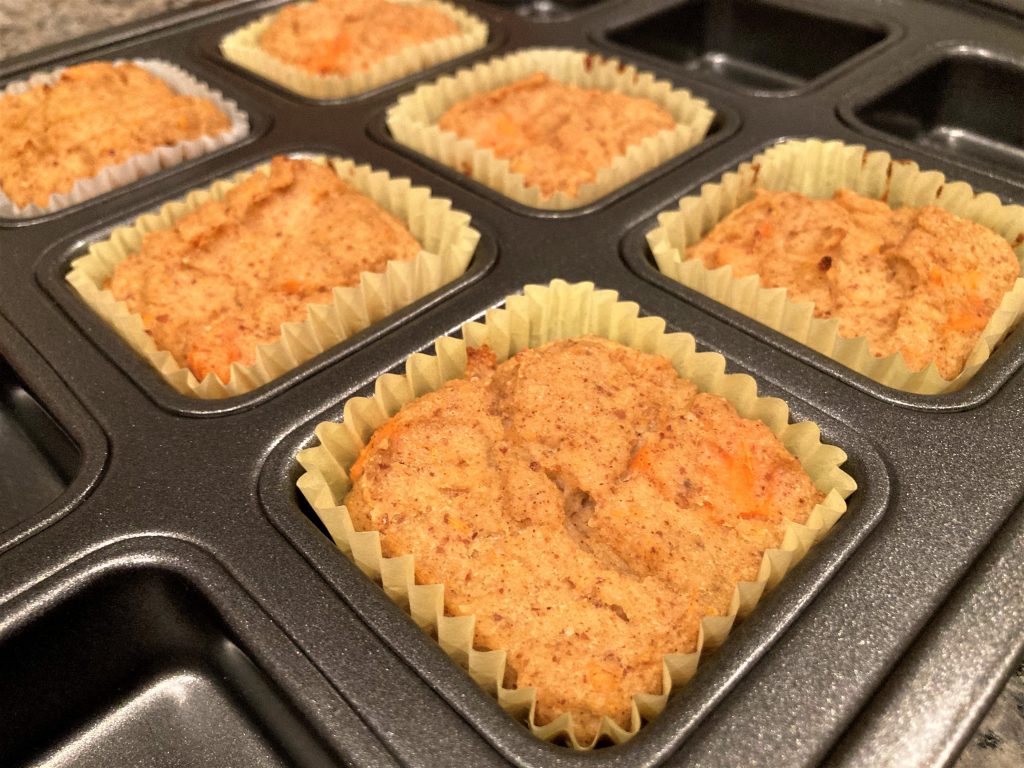
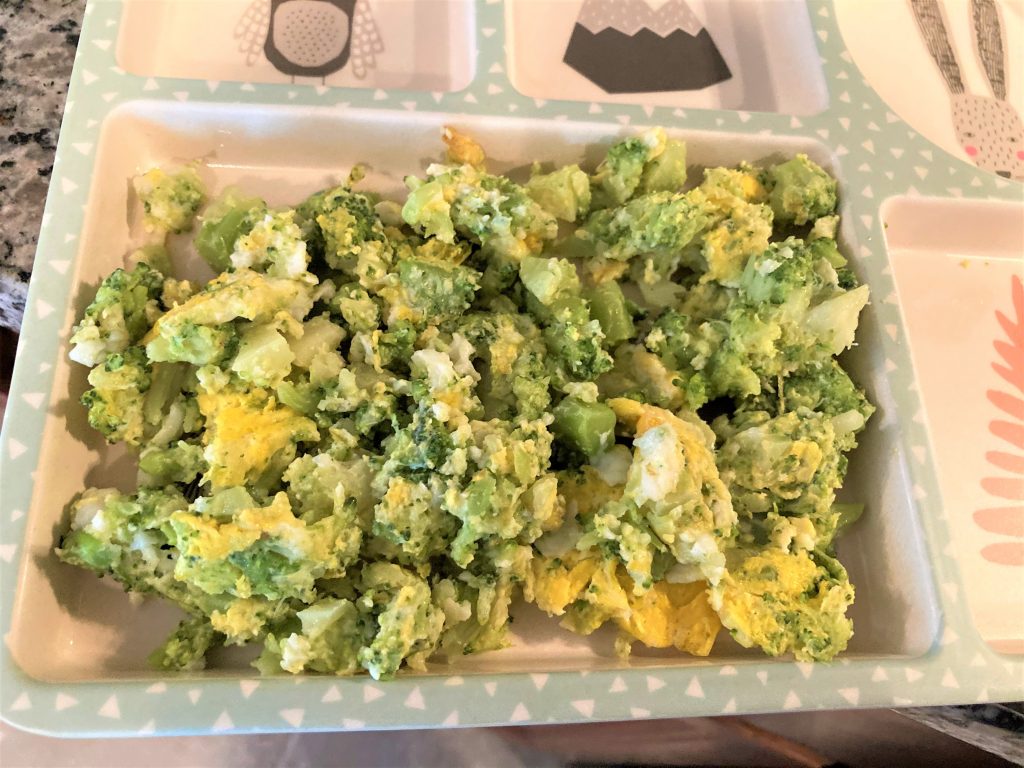
Tip #2:
The. Cooking. Method. Matters. – AND – if at first they don’t eat it, try, try again!! Thomas is very finicky about how his veggies are prepared. I will say it again: he is VERY finicky about how his veggies are prepared. The picture above illustrates this perfectly.
One evening, I worked very hard to prepare broccoli exactly the way Thomas likes it – chopped into florets – no stems – and tender, but not mushy (gently boiled). He refused to eat it so I packed it up and sauteed it with an egg the next day for lunch (above photo). He devoured ALL of it and cried for more – yes, tears streaming down his face because he wanted more.
One more example: just last night, Thomas refused to eat his cauliflower puree (a food which he normally loves). That night after he went to bed, I quickly whipped up a batch of cauliflower muffins. The next morning, he ate two big cauliflower muffins, and again, cried for more.
Here are some specific suggestions:
- Cauliflower: steamed or boiled, and then pureed with butter or olive oil, a pinch of salt and herb.
- Spinach & Broccoli: sautéed into an omelet
- Brussels Sprouts: Shredded and sautéed very slowly in olive oil, until caramelized. For a bonus, add a few drops of maple syrup to bring out the sweetness! Mix into mashed potatoes to improve the texture.
- Bok Choy: gently sautéed in olive oil, then diced into small pieces and served with mashed potatoes to improve texture.
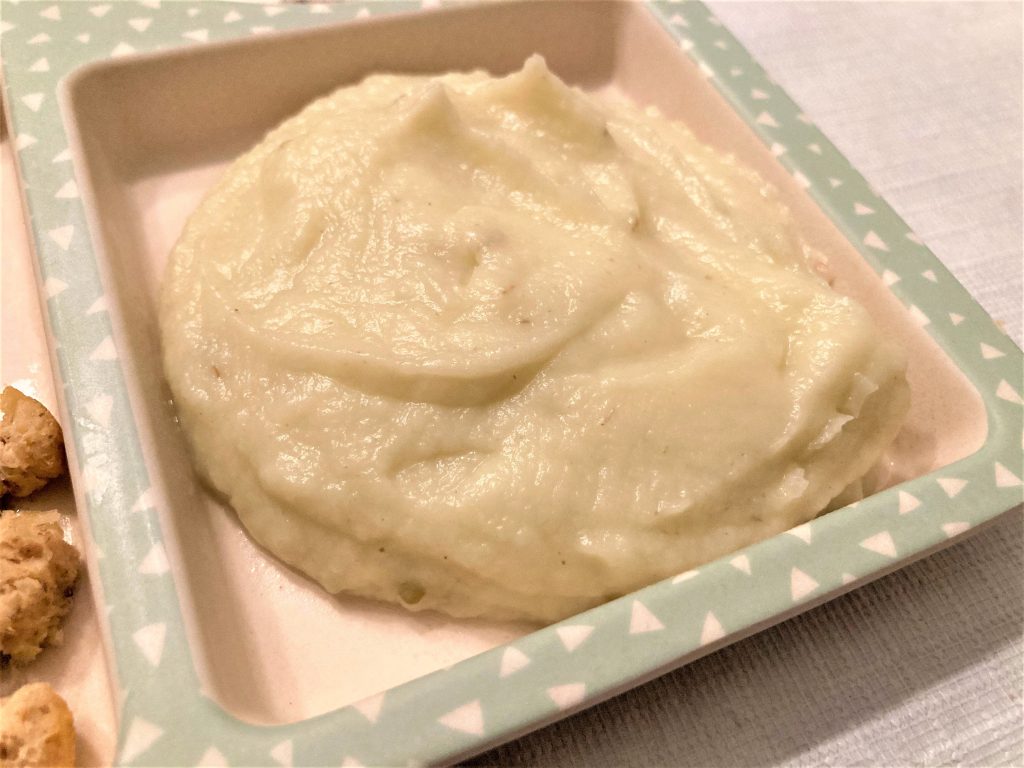
Tip #3:
Veggie + Fruit = sweet and colorful. Have you ever noticed that most adults mix veggies into their fruit smoothies to make them taste better? (Green Smoothies, Pumpkin Smoothies?!) Have you ever considered applying that same concept when you want your kids to eat their veggies?
It is sooooo important for kids to eat a variety of colors each day. Each pigment (or phytonutrient) confers specific health benefits. Orange strengthens the eyes, skin, and immune system. Green supports the liver, energy, and proper detoxification. Blue/purple boost cognition and brain development. Red powers the heart and circulatory system.
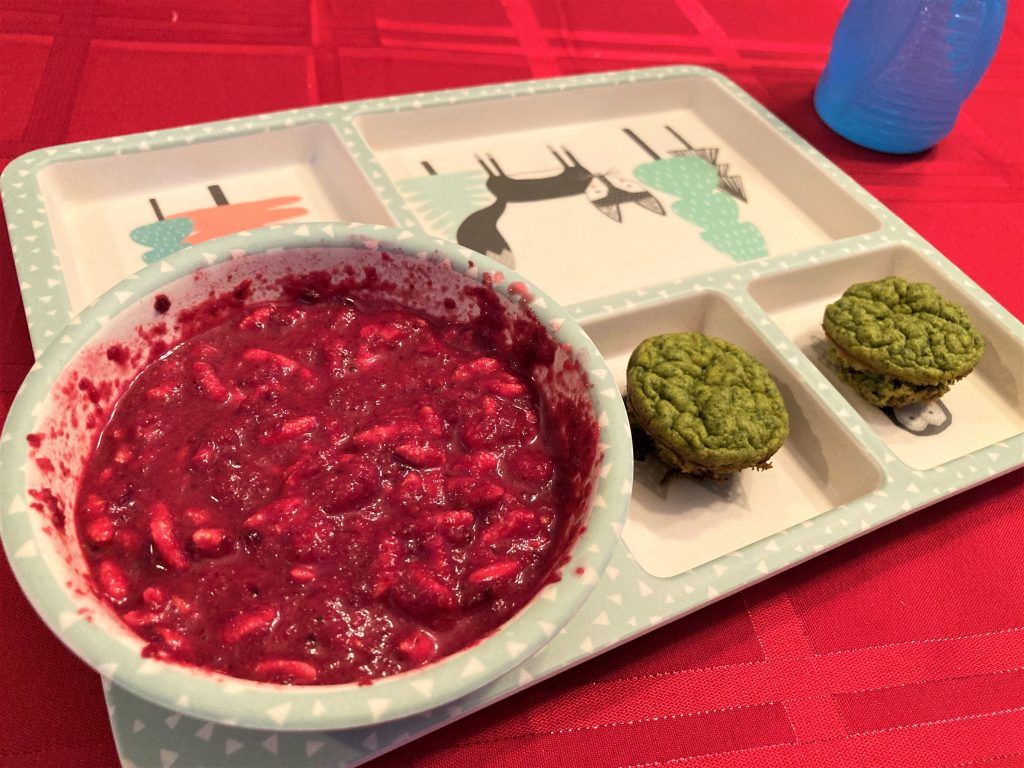
Red:
- Beets are naturally sweet and lend well to purees. I puree beets and mix them with applesauce, puffed rice, and almond milk.
- Tomatoes contain lycopene and lutein, two carotenoids that support eye health. These nutrients are best absorbed when cooked and consumed with a healthy fat such as olive oil. This sounds like tomato sauce!! A go-to lunch is cooked quinoa mixed with no-salt tomato sauce and a drizzle of olive oil OR black bean pasta with no-salt tomato sauce and olive oil!
Orange:
- Sweet potatoes are also naturally sweet and only require a pinch of cinnamon to turn into a tasty toddler treat! However, I always add a healthy fat such as olive oil or almond milk to facilitate absorption of fat-soluble vitamin A (and make it a smoother consistency).
- Carrots are a very approachable root veggie that can easily be roasted with olive oil AND CINNAMON to make a tasty treat. Adding cinnamon to any food accentuates the sweetness while stabilizing blood sugar and providing powerful antioxidants.
Green:
- Leafy greens are nutrient powerhouses and SO easy to blend with sweet fruits. Smoothies and muffins are always favorites – though spinach is a little bit more tender and lends better to purees.
- Zucchini has a mild taste and can literally go into anything – pancakes, muffins, fritters, and smoothies (even for adults!) When in season, I literally buy it every time I go to the grocery store and find a new use for it!
Blue/Purple:
- Frozen or fresh blueberries can be blended into muffins or smoothies for excellent brain support!
- Purple potatoes, purple sweet potatoes, & purple carrots are packed with anthocyanins (antioxidants) and are available in most grocery stores in the fall. Thomas literally ate mashed purple potatoes for weeks this fall.
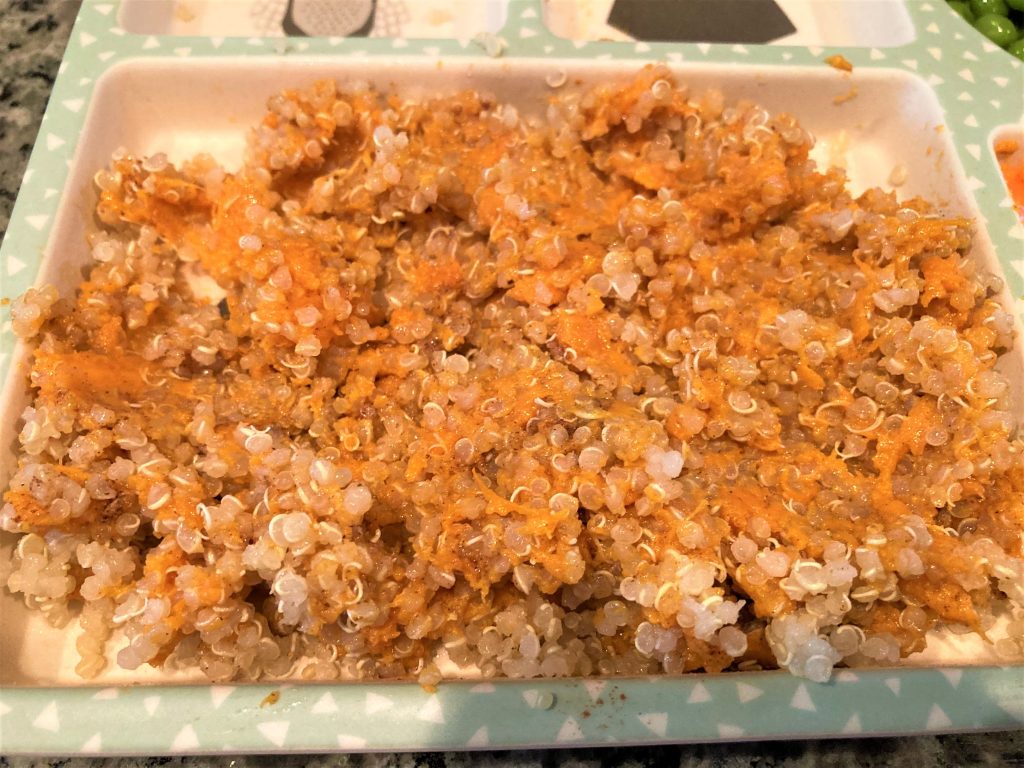
Tip #4:
Cook at least one food per day and store the leftovers. Here are the foods that are always on Thomas’ shelf in our refrigerator for a meal or snack at any time!
- Baked sweet potatoes (reheat in toaster oven and serve with olive oil or butter) OR use in a recipe such as muffins!
- Baked squash – butternut squash, delicata squash, acorn squash, etc.
- Cooked quinoa (to mix with squash, tomato sauce, or applesauce; I add a little more water than the package suggests and cook for 5 extra minutes to make it extra tender)
- Peas & carrots (the quintessential finger food)
- Sautéed pears (cooking the pears makes them softer AND prevents them from browning so they are always ready to go! Add cinnamon or pumpkin spice for added sweetness and blood sugar stability.)
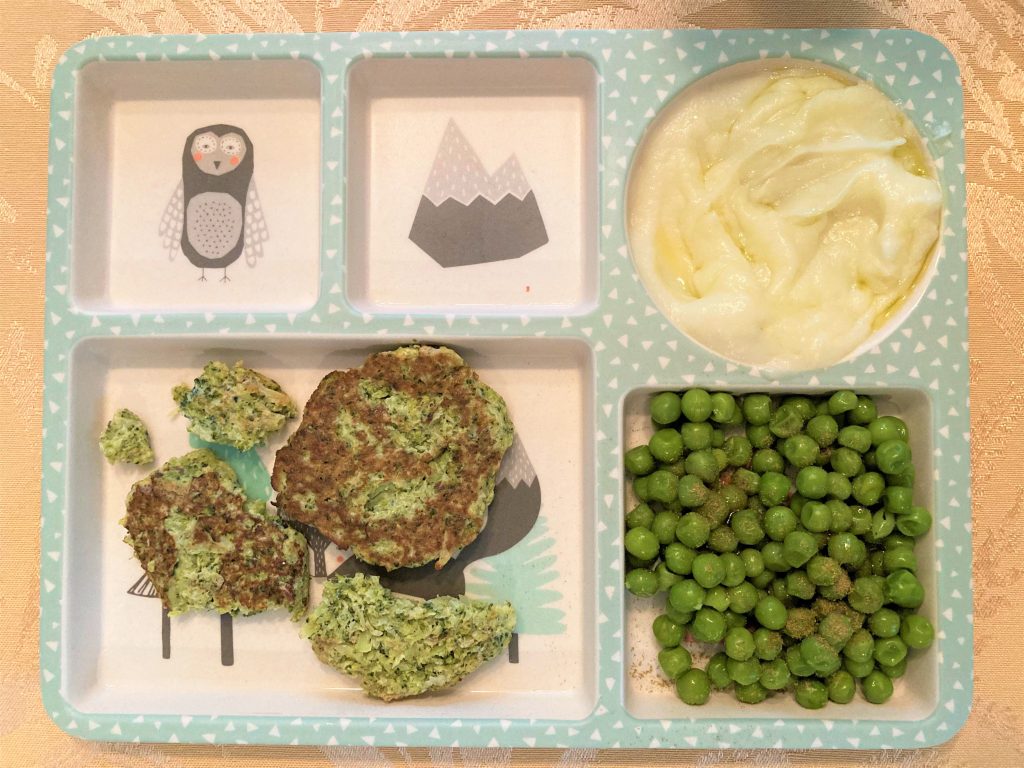
Tip #5:
Stock your refrigerator & pantry. And please read the labels!
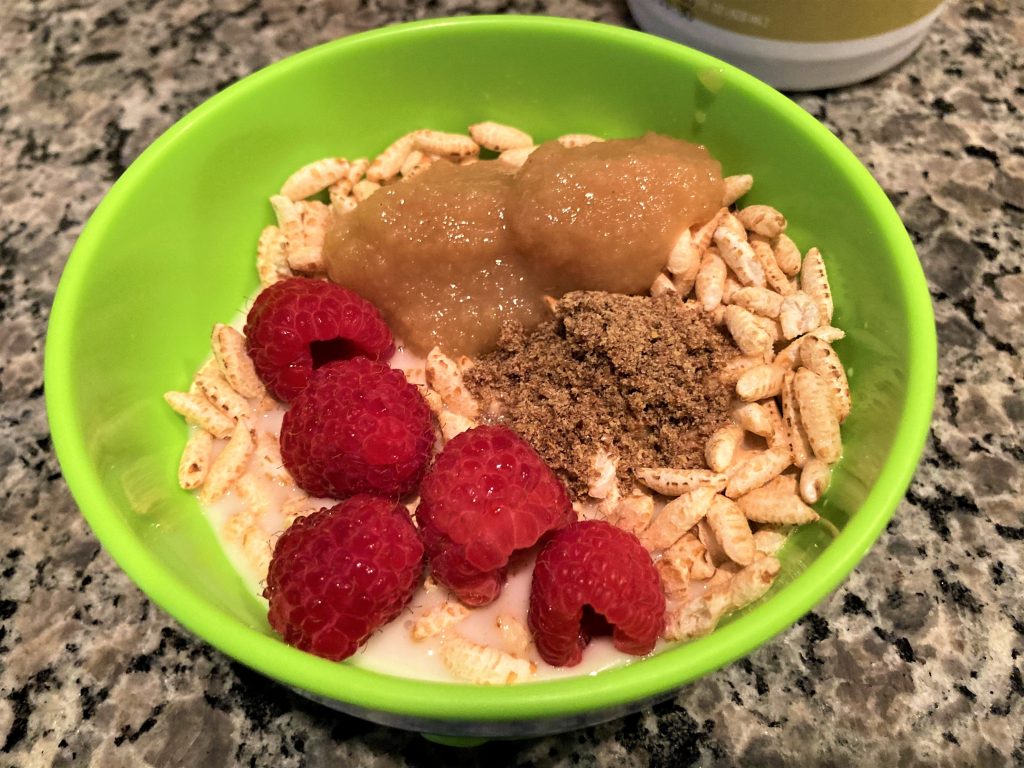
- Puffed brown rice cereal I like Arrowhead Mills, but any brand will work. I mix this with plenty of healthy fats and proteins such as almond milk, almond butter, flaxseed, goat’s milk yogurt, almond yogurt, and some fruit puree and after the rice soaks up the liquid for a few minutes, Thomas LOVES the mushy texture!
- A clean almond/nut milk – without sugar, gums, stabilizers, or flavorings. I highly recommend “Malk” brand. It contains 3 or 4 ingredients, depending on whether you buy the vanilla or plain version: “organic sprouted almonds, water, Pink Himalayan salt, vanilla bean.” I put it in cereal, on sweet potatoes, in recipes, etc.
- Ground Flaxseed – this can be mixed into any baked good or mixed into any cereal. Flaxseed does an amazing job at keeping the colon moving regularly (if you know what I mean), and also provides healthy fats. I usually give Thomas about 1-2 tsp per day. (Store in air-tight container in the refrigerator to prevent oxidation and spoilage.)
- Low-sodium tomato sauce, organic if possible. Toddlers do not need to eat the amount of sodium that is in regular pasta sauces so look for a no-salt variety and add a small pinch of your own salt if needed. Thomas actually prefers no salt at all – he likes the gentle, sweet taste of tomatoes!
- Organic applesauce – I keep quite the stash of both applesauce jars and individual cups. When mixed with healthy fats (to stabilize blood sugar and fuel growing brains), it is a perfect snack, baking ingredient, and addition to veggie purees and dishes.
- Fruit & veggie purees – I keep a stash of these just in case I need a quick nutritious snack. Read the ingredients label and know what is in the food. Also, consider glass jars to avoid too much plastic exposure. I skim the sale tags every time I’m shopping so I only buy 1 or 2 when they’re on sale. I organize them in my pantry according to the color or the food, so I can quickly grab whichever color Thomas hasn’t had much of that day 🙂
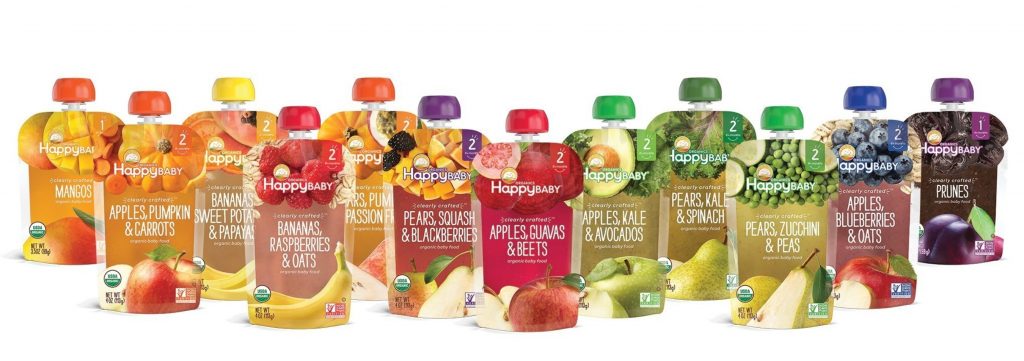
Now, this post is entitled “Part 1” because I am sure that Thomas will challenge me to create new ways to make veggies taste great in the coming weeks and months. His food preferences change daily, so I look forward to sharing more creations in the future!
